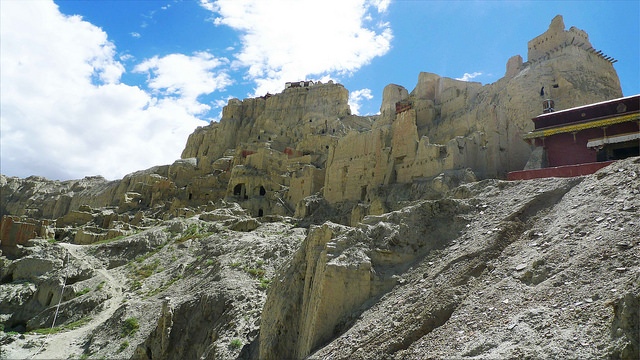
Climate change could have played a major role in shaping and changing the sociopolitical development of ancient civilizations in the Indian subcontinent, according to a new study. Although past research has attempted to explore the relationship between climate change and civilization, links between Indian summer monsoon (ISM) variability and historic regional events have been challenging to derive, due largely to the lack of detailed, high-resolution climate records. To bridge this knowledge gap, Gayatri Kathayat and colleagues utilized a high-resolution and precisely dated record of speleothem oxygen isotopes from two stalagmite profiles in Sahiya Cave, North India. This region is strongly influenced by upstream changes in ISM circulation and rainfall, making the stalagmites found in Sahiya Cave reliable records of past climate change. Kathayat and colleagues combined these new records with previous Sahiya Cave speleothem oxygen isotope records they had obtained during a prior study – forming one of the most thorough recordings of ISM variability over the last 5,700 years ever established. This detailed record revealed a trend in drier conditions, which began approximately 4,100 years ago, but spanned multiple centuries and perhaps contributed to the deurbanization of the Indus Valley civilization, they say. Kathayat and colleagues believe climate change could have contributed to the downfall of the Guge Kingdom in western Tibet around 1620 A.D., as the speleothem oxygen isotope record indicates the region experienced severe drought around this time. The authors acknowledge possible anthropogenic factors that could have contributed to changes in ancient Indian civilizations as well; therefore, they believe future studies of archeological and paleoclimate data are necessary.
_____________________________________
The ruins at Tsaparang, the ancient capital city of the Guge Kingdom in western Tibet, approximately 150 km (as the crow flies) from Sahiya Cave, North India. The Guge Kingdom thrived for 700 years but suddenly collapsed around the 1630s following two decades of dramatic downturns in Indian monsoon rainfall and Northern Hemisphere temperature. Credit: Dr. Houyuan Lu in 2013
_____________________________________
Article Source: Science Advances is published by AAAS, the nonprofit science society.
_________________________________________________
Receive 30 days free access to the popular new CuriosityStream lineup of documentaries on science, history, nature, and technology as a new Popular Archaeology premium subscriber.
___________________________________________
Travel and learn with Far Horizons.
______






